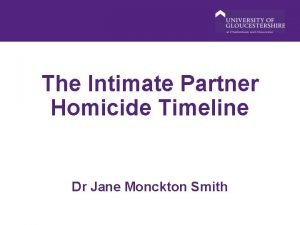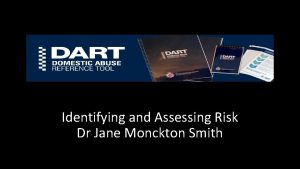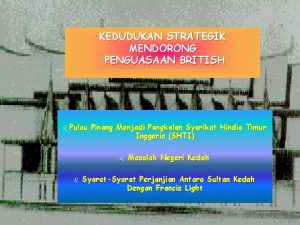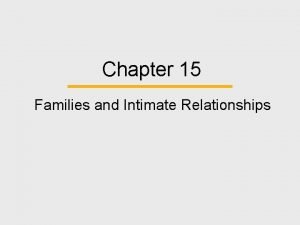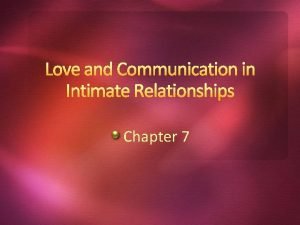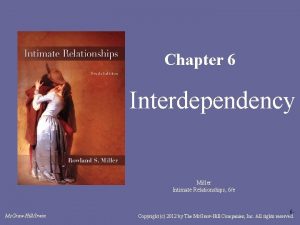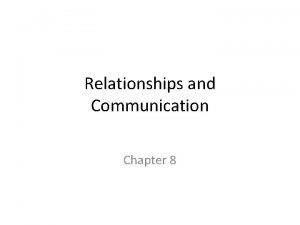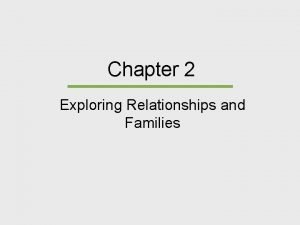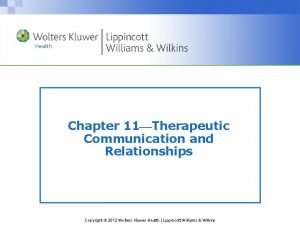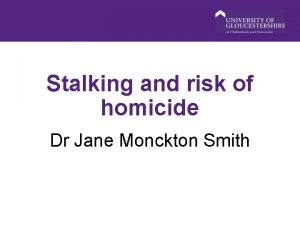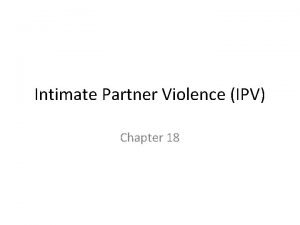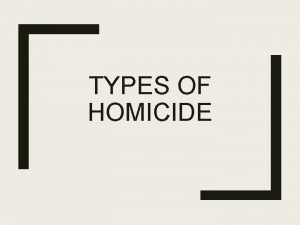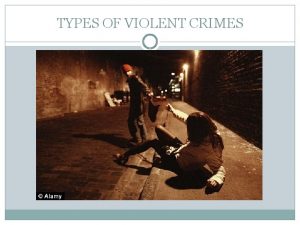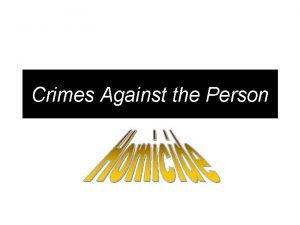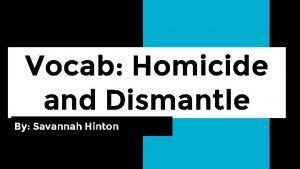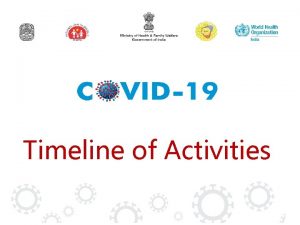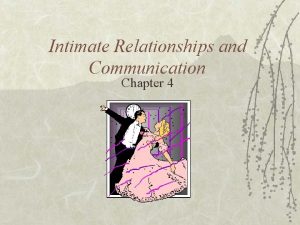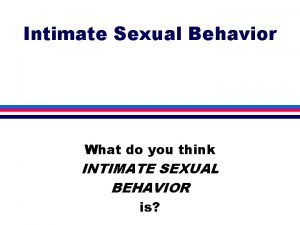The Intimate Partner Homicide Timeline Dr Jane Monckton


















- Slides: 18

The Intimate Partner Homicide Timeline Dr Jane Monckton Smith

Peer Review

What we know

What we did

What we found

Uses

Stalking and the eight stages • Significant relationship between stalking behaviours after separation, and tracking/monitoring behaviours during a relationship • Stalking is a sign of escalation and increasing threat


Stage 1: History • The person has a history of control, stalking or violence. This could be a criminal record or allegations or suspicions. • Possessive and jealous • Thin skinned

Stage 2: commitment whirlwind • • • Normal romantic actions speeded up Seeks commitment as soon as possible Perpetrator becomes dependent and jealous very early

Stage 3: Relationship • • • Dominated by coercive control Presence of high risk markers Possible tracking and monitoring

Stage 4: Trigger event • • • Separation Imagines separation Threat of separation Ill health of perpetrator or victim Financial ruin Significant threat to status

Stage 5: Escalation • • Increase in frequency of controlling behaviours Increase in severity of controlling behaviours Increase repertoire Variance between controlling behaviours Stalking Suicide threats Threats of violence

Stage 6: Change in thinking • • Loss of control appears irretrievable Loss of status irretrievable Loss of control or status intolerable Decides on how to resolve the issues

Stage 7: Planning • • • Reconnaissance Stalking Web searches Purchase weapons, restraints Seeks opportunities Grave digging

Stage 8: Homicide • • Homicide with or without confession Homicide with suicide Missing person Suicide Suspicious death Accident Extreme levels of violence – overkill possible irrespective of violence histroy

Observations

References • • • Adams, D. (2007). Why do they kill? Men who murder their intimate partners. Nashville: Vanderbilt University Press. Brennan, D. (2016). Femicide Census. Retrieved March 30, 2018, from http: //www. northwales-pcc. gov. uk/Document. Library/Advice/Femicide-Census-Report-2016. pdf Dobash, R. E. , & Dobash, R. P. (2015). When Murder Women (interpersonal violence). Oxford: Oxford University Press. Johnson, M. (2008). A Typology of Domestic Violence: Intimate Terrorism, Violent Resistance, and Situational Couple Violence. Boston: Northeastern University Press Luckenbill, D. F. (1977). Criminal Homicide as a Situational Transaction. Social Problems, 25, (2), 176 -186. Monckton Smith, J. (2019) The Homicide Timeline: Using Foucauldian Analysis to Track an Eight Stage Relationship Progression to Homicide Violence Against Women https: //doi. org/10. 1177/1077801219863876. Monckton Smith, J. , Williams, A. , & Mullane, F. (2014). Domestic Abuse, Homicide and Gender: strategies for policy and practice. Hampshire: Palgrave Macmillan Monckton Smith, J. , Szymanska, K. & Haile, S. , (2017). Exploring the relationship between stalking and homicide. Suzy Lamplugh Trust. Retrieved March 30, 2018 from http: //eprints. glos. ac. uk/4553/ Mullen, P. E. (2004). The autogenic (self generated) massacre. Behavioural Science and Law. 22, (3), 311 -23. Schlesinger, L. B. (2002). Stalking, Homicide, and Catathymic Process: A Case Study. International Journal of Offender Therapy and Comparative Criminology, 46, (1), 64 -74. Stark, E. (2009), Coercive Control: How men entrap women in personal life. Oxford: Oxford University Press UNODC (2013). Global Study on Homicide. United Nations Office on Drugs and Crime. Retrieved March 30, 2018 from https: //www. unodc. org/documents/gsh/pdfs/GLOBAL_HOMICIDE_Report_Ex. Sum. pdf
 In control jane monckton smith
In control jane monckton smith Jane monckton smith
Jane monckton smith Periwinkle doerfler
Periwinkle doerfler Kedudukan strategik pulau pinang
Kedudukan strategik pulau pinang Define the relationship chapter 15
Define the relationship chapter 15 Cankaya university
Cankaya university Friendly relationship chapter 7
Friendly relationship chapter 7 Intimate family chapter 6
Intimate family chapter 6 Consultative register dialogue
Consultative register dialogue 01 me line intimate
01 me line intimate Meaning of intimate
Meaning of intimate Meaning of initmacy
Meaning of initmacy Dewgarden foaming intimate wash benefits
Dewgarden foaming intimate wash benefits Abcde of intimate relationship
Abcde of intimate relationship Sternberg love types
Sternberg love types Intimate family chapter 2
Intimate family chapter 2 Intimate zone in communication
Intimate zone in communication Intimacy after incarceration
Intimacy after incarceration Intimate zone in communication
Intimate zone in communication
